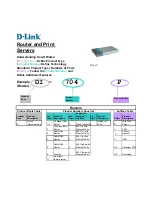
host.
A system that is directly attached to the storage
subsystem through a fibre-channel I/O path. This
system is used to serve data (typically in the form of
files) from the storage subsystem. A system can be both
a storage management station and a host
simultaneously.
host bus adapter (HBA).
An interface between the
Fibre Channel network and a workstation or server.
host computer.
See
host
.
host group.
The collection of HBAs and NASs in a
fabric discovered by the SANavigator tool and displayed
with a yellow background on the Physical and Data
Path Maps.
hub.
In a network, a point at which circuits are either
connected or switched. For example, in a star network,
the hub is the central node; in a star/ring network, it is
the location of wiring concentrators.
IC.
See
integrated circuit.
IDE.
See
integrated drive electronics.
In-band.
Transmission of management protocol over
the Fibre Channel transport.
Industry Standard Architecture (ISA).
A bus
standard for IBM compatibles that allows components to
be added as cards plugged into standard expansion
slots. ISA was originally introduced in the IBM PC/XT
with an 8-bit data path. It was later expanded to permit
a 16-bit data path when IBM introduced the PC/AT.
initial program load (IPL).
The part of the boot
sequence during which a computer system copies the
operating system kernel into main memory and runs it.
integrated circuit (IC).
Also known as a
chip
. A
microelectronic semiconductor device that consists of
many interconnected transistors and other components.
ICs are constructed on a small rectangle cut from a
silicon crystal or other semiconductor material. The
small size of these circuits allows high speed, low
power dissipation, and reduced manufacturing cost
compared with board-level integration.
integrated drive electronics (IDE).
Also known as an
Advanced Technology Attachment Interface (ATA). A
disk drive interface based on the 16-bit IBM PC ISA in
which the controller electronics reside on the drive itself,
eliminating the need for a separate adapter card.
integrated services digital network (ISDN).
A digital
end-to-end telecommunication network that supports
multiple services including, but not limited to, voice and
data. ISDNs are used in public and private network
architectures.
interrupt request (IRQ).
A type of input found on
many processors that causes the processor to suspend
normal instruction execution temporarily and start
executing an interrupt handler routine. Some processors
have several interrupt request inputs that allow different
priority interrupts.
Internet Protocol address.
The unique 32-bit address
that specifies the location of each device or workstation
on the Internet. For example, 9.67.97.103 is an IP
address.
IP address.
See
Internet Protocol address
.
IPL.
See
initial program Load.
IRQ.
See
interrupt request.
ISA.
See
Industry Standard Architecture.
ISDN.
See
Integrated Services Digital Network.
isolated group.
A collection of isolated devices not
connected to the SAN but discovered by the
SANavigator tool. The Isolated Group displays with a
gray background near the bottom of the Physical and
Data Path Maps.
Java Runtime Environment (JRE).
A subset of the
Java Development Kit (JDK) for end users and
developers who want to redistribute the Java Runtime
Environment (JRE). The JRE consists of the Java virtual
machine, the Java Core Classes, and supporting files.
JRE.
See
Java Runtime Environment
.
label.
A discovered or user entered property value that
is displayed underneath each device in the Physical and
Data Path Maps.
LAN.
See
local area network
.
LBA.
See
logical block addressing
.
local area network (LAN).
A computer network
located on a user’s premises within a limited geographic
area.
logical block addressing (LBA).
A hard disk sector
addressing scheme in which the addressing conversion
is performed by the hard disk firmware. LBA is used on
all SCSI hard disks and on ATA-2 conforming IDE hard
disks.
logical unit number (LUN).
An identifier used on a
small computer systems interface (SCSI) bus to
distinguish among up to eight devices (logical units) with
the same SCSI ID.
loop address.
The unique ID of a node in Fibre
Channel loop topology sometimes referred to as a Loop
ID.
loop group.
A collection of SAN devices that are
interconnected serially in a single loop circuit. Loop
74
IBM TotalStorageFAStT900 Fibre Channel Storage Server: User’s Guide
Содержание TotalStorageFAStT900
Страница 2: ......
Страница 3: ...IBM TotalStorageFAStT900 Fibre Channel Storage Server User s Guide GC26 7534 00 ...
Страница 7: ...IBM license agreement for Machine Code 70 Glossary 71 Index 79 Contents v ...
Страница 8: ...vi IBM TotalStorageFAStT900 Fibre Channel Storage Server User s Guide ...
Страница 10: ...viii IBM TotalStorageFAStT900 Fibre Channel Storage Server User s Guide ...
Страница 12: ...x IBM TotalStorageFAStT900 Fibre Channel Storage Server User s Guide ...
Страница 18: ...xvi IBM TotalStorageFAStT900 Fibre Channel Storage Server User s Guide ...
Страница 62: ...36 IBM TotalStorageFAStT900 Fibre Channel Storage Server User s Guide ...
Страница 86: ...60 IBM TotalStorageFAStT900 Fibre Channel Storage Server User s Guide ...
Страница 108: ...82 IBM TotalStorageFAStT900 Fibre Channel Storage Server User s Guide ...
Страница 111: ......
Страница 112: ... Part Number 32P0341 Printed in U S A GC26 7534 00 1P P N 32P0341 ...













































